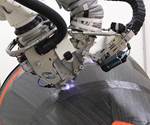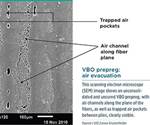OOA overview: Market & opportunities
CW looks at where aero-OEMs and their suppliers are finding out-of-autoclave alternatives.
Although out-of-autoclave (OOA) processing in aerospace applications has been employed for decades in the manufacture of thermoset composite parts for unmanned spacecraft and, more recently, in the manufacture of substructures for commercial passenger aircraft, the autoclave remains the curing technology of choice for the world’s large aircraft OEMs, primarily because of its brute strength — its ability to definitively consolidate composite parts and remove the voids that can compromise structural performance. Such robust consolidation, however — <1% void content — comes at a high price in terms of capital expense, operational costs and time. As composites move further into aircraft, it’s clear the autoclave cannot be the only process available to aerocomposites fabricators. Today, OOA alternatives include vacuum bag-only (VBO) prepregs, dry fiber placement, infusion processes (which rely on oven cure), resin transfer molding (RTM) and thermoplastic composites.
From a technical viewpoint the question is simple: Can OOA options be matured sufficiently to yield parts with <1% void content? The answer, based in part on the reports in this supplement, is yes, but there is a larger question: Can OOA processes match this parameter and demonstrate enough overall savings in capital expense and time to justify the process development/recertification efforts that a move to OOA will require?
We may have that answer sooner than later. As the stories in this OOA Supplement demonstrate, the activity level in OOA process development is substantial, involving structures on flying aircraft. And the composites professionals involved with each, as you’ll find, are strongly invested in making OOA not only feasible, but successful.
Related Content
-
Cycling forward with bike frame materials and processes
Fine-tuning of conventional materials and processes characterizes today’s CFRP bicycle frame manufacturing, whether in the large factories of Asia or at reshored facilities in North America and Europe. Thermoplastic resins and automated processes are on the horizon, though likely years away from high-volume production levels.
-
The making of carbon fiber
A look at the process by which precursor becomes carbon fiber through a careful (and mostly proprietary) manipulation of temperature and tension.
-
PEEK vs. PEKK vs. PAEK and continuous compression molding
Suppliers of thermoplastics and carbon fiber chime in regarding PEEK vs. PEKK, and now PAEK, as well as in-situ consolidation — the supply chain for thermoplastic tape composites continues to evolve.











.jpg;maxWidth=300;quality=90)

